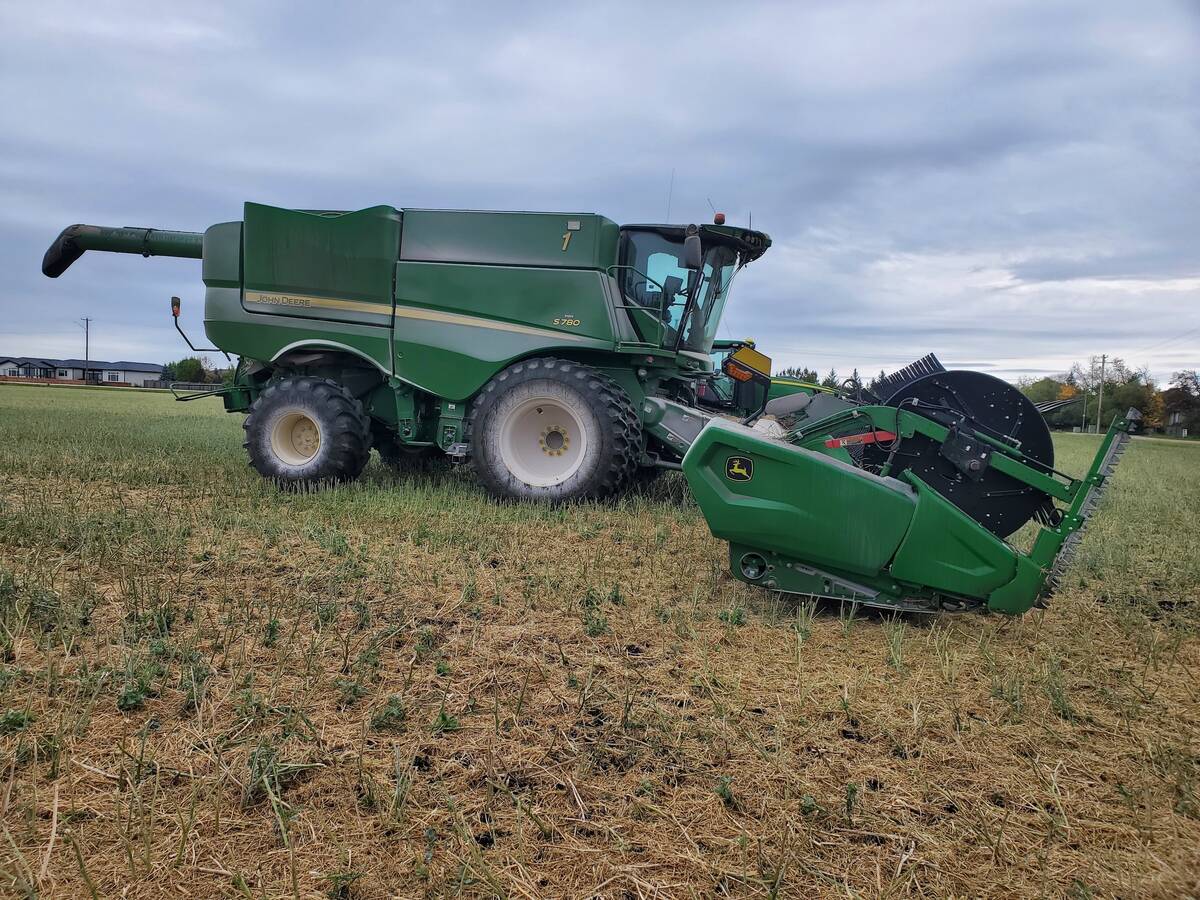Fecal matter most common | Exposing mature animals to the virus needs to be done quickly and feedback is the only option
The process of feeding piglet manure and piglet parts to mature pigs as a way to generate immunity to porcine epidemic diarrhea has caught the attention of animal rights activists.
It has also generated a quick re-sponse from veterinarians involved in trying to control the virus.
An online video posted by the Humane Society of the United States last week showed a Kentucky pig farm infected with PED. Piglet intestines were fed back to sows at that farm.
Dr. Dawn Magrath, a Lethbridge veterinarian who specializes in hogs, said feeding piglet parts is not the typical way to achieve immunity. It is more common to feed manure from infected piglets back to sows.
Read Also

Powdery mildew can be combine fire risk
Dust from powdery mildew can cause fires in combines.
“Unless we provide that material to them, they’re not going to get exposed,” said Magrath.
“It’s kind of a needs-must situation. It’s only done for a period of time to create immunity. It’s not necessarily done forever.”
She said piglet parts might have been used to create immunity in some U.S. sows when quick action was needed.
“But that is not typically the procedure. We would just collect fecal material and use that,” she said.
“We don’t need much material to do feedback because it is such a contagious virus, but we need to ensure that all animals are exposed. Otherwise you could get pockets of non-immunized animals in the herd and that could cause prolonged disease.”
Dr. Egan Brockhoff, a hog veterinarian who has visited PED-infected barns in the United States and Asia, said vaccines have proven ineffective against the virus.
PED is an enteric virus that attacks the intestines, so material that directly reaches the intestines is most effective.
Brockhoff advises producers who have the virus in their barns to use feedback as soon as possible to generate herd immunity.
“We want to eradicate the disease as fast as possible, so that means we want to spread it to every pig in the barn as quickly as possible,” he told producers Feb. 19.
If an outbreak is confirmed, the herd must be closed for at least 145 days and measures taken to expose all animals to the virus.
“Those sows are going to develop colostral immunity about four weeks after the initial outbreak,” he said.
“They’ll start producing a more rich colostrum, but more important than that, they’re going to start pushing antibodies out in their milk every day, and that’s going to line the wall of the gut and prevent infection.”
Dr. Tim Pasma of Ontario Agriculture told producers in that province that feedback is a way to use the biology of the virus to advantage.
He said the virus incubation period is 22 to 24 hours, and infected piglets shed the virus for seven to nine days. Exposure of mature animals to the virus should be done as soon as possible so the process of building immunity can begin.
Even when all animals are exposed, Brockhoff said the U.S. experience has shown lingering problems.
“Chances of chronic scours in the farrowing room are high,” he said.
A panel of veterinarians and animal care specialists reviewed and commented last week on the HSUS video taken at the Kentucky farm.
“There’s no question that people may be put off by this treatment, but PEDV is wreaking havoc out there on the farms and feedback is the only control method we have found to be effective,” said Dr. Tom Burkgren, executive director of the American Association of Swine Veterinarians.
“Is it better to save pigs’ lives and improve their welfare or to say this is too icky and just let pigs die?
“That’s what it comes down to because there is absolutely no other alternative.”

















